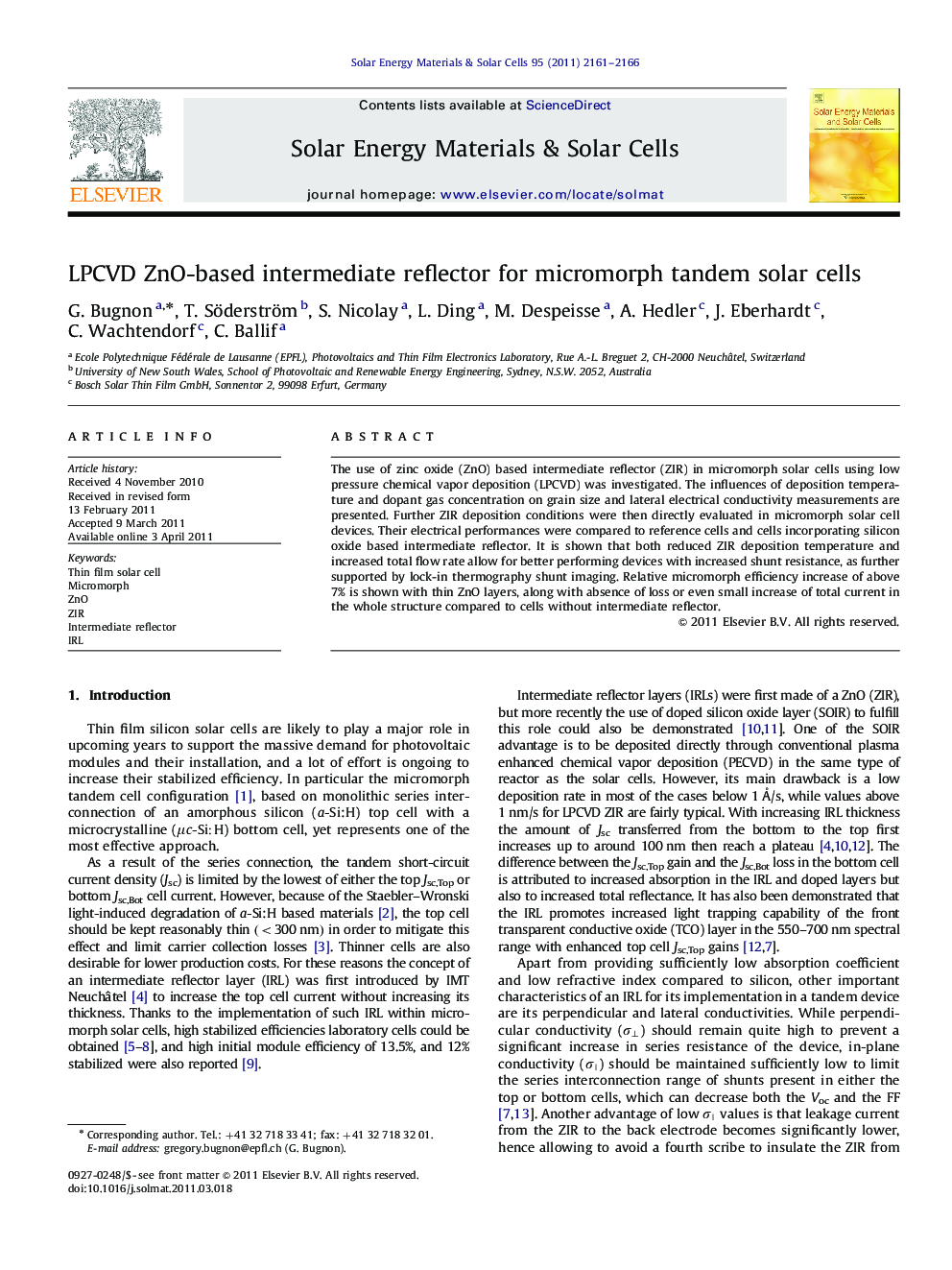| Article ID | Journal | Published Year | Pages | File Type |
|---|---|---|---|---|
| 78762 | Solar Energy Materials and Solar Cells | 2011 | 6 Pages |
The use of zinc oxide (ZnO) based intermediate reflector (ZIR) in micromorph solar cells using low pressure chemical vapor deposition (LPCVD) was investigated. The influences of deposition temperature and dopant gas concentration on grain size and lateral electrical conductivity measurements are presented. Further ZIR deposition conditions were then directly evaluated in micromorph solar cell devices. Their electrical performances were compared to reference cells and cells incorporating silicon oxide based intermediate reflector. It is shown that both reduced ZIR deposition temperature and increased total flow rate allow for better performing devices with increased shunt resistance, as further supported by lock-in thermography shunt imaging. Relative micromorph efficiency increase of above 7% is shown with thin ZnO layers, along with absence of loss or even small increase of total current in the whole structure compared to cells without intermediate reflector.
Graphical abstractFigure optionsDownload full-size imageDownload as PowerPoint slideHighlights► LPCVD ZnO intermediate reflector for tandem thin film Si solar cell is analyzed. ► Role of ZnO deposition conditions on electrical properties is examined. ► Decreased temperature and increased total flow improve cell performances.
